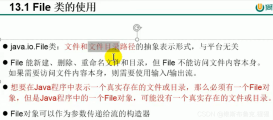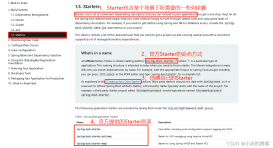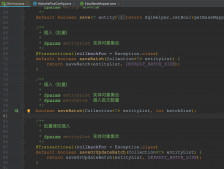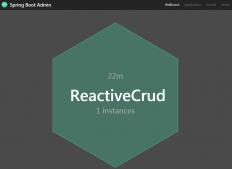一、@Bean的“full”模式和“lite”模式
在一般常见情况下,@Bean注解在@Configuration类中声明,称之为“full”模式;当@Bean注解和@Component注解组合使用时,称之为“lite”模式。
这两种组合使用的情况,初次看文档时没看明白,多看了几次又跑了测试代码,才大致理解了区别。
二、两种模式的差异
如果只是把@Bean注解用在方法上,并且各个@Bean注解的方法之间没有调用,上述两种模式达到的效果基本相同,都可以把@Bean注解方法返回的对象作为bean注册到容器中。
如果各个@Bean注解的方法之间有相互调用,那么两种模式就会有很大的区别-与full模式下的@Configuration不同,lite模式下 @Bean方法互相调用无法声明Bean之间的依赖关系。
这点在@Bean注解源码注释上也有说明。
1、“full”模式下@Bean方法互相调用
|
1
2
3
4
5
6
7
8
9
10
11
12
13
14
15
16
17
|
import org.springframework.beans.factory.annotation.Autowired;import org.springframework.context.annotation.Bean;import org.springframework.context.annotation.Configuration;import org.springframework.stereotype.Component; @Configurationpublic class Config { @Bean() public C c(){ return new C(); } @Bean public B b(){ return new B(c()); } } |
类B:
|
1
2
3
4
5
6
7
|
public class B { public C c; public B(C a){this.c=a;} public void shutdown(){ System.out.println("b close..."); }} |
类C:
|
1
2
3
4
5
6
7
8
9
10
11
12
|
public class C { private String name; @PostConstruct public void init(){ this.name = "I am a bean"; } @Override public String toString(){ return "c say:" + name; }} |
如上述所示代码,我们有两个类B和C,在@Configuration类中,使用两个@Bean方法分别定义bean b 和bean c,但是需要注意的是new B(c()) 所在的@Bean方法调用了另一个@Bean方法。
测试主程序类:
|
1
2
3
4
5
6
7
8
9
10
11
12
13
14
15
16
17
|
import com.dxc.opentalk.springtest.config.B;import org.springframework.context.annotation.AnnotationConfigApplicationContext;import org.springframework.context.annotation.ComponentScan;import org.springframework.context.annotation.EnableAspectJAutoProxy; @EnableAspectJAutoProxy@ComponentScan("com.dxc.opentalk.springtest")public class BootStrap { public static void main(String[] args) { AnnotationConfigApplicationContext applicationContext = new AnnotationConfigApplicationContext(BootStrap.class); B b = (B)applicationContext.getBean("b"); System.out.println(b.c); System.out.println(applicationContext.getBean("c")); System.out.println(applicationContext.getBean("c").equals(b.c)); }} |
程序输出结果:
c say:I am a bean
c say:I am a bean
true
可以看出bean c 被注入到了bean b 中,bean b中的成员 c 确实是Spring容器中的bean。(其实,debug程序跟踪Spring中的单例池更清晰,这里采用输出结果说明)
2、“lite”模式下@Bean方法互相调用
还是上面的代码,我们只把Config类上的注解更换成@Component,其余代码保持不变:
|
1
2
3
4
5
6
7
8
9
10
11
12
13
14
15
16
17
|
import org.springframework.beans.factory.annotation.Autowired;import org.springframework.context.annotation.Bean;import org.springframework.context.annotation.Configuration;import org.springframework.stereotype.Component; @Componentpublic class Config { @Bean() public C c(){ return new C(); } @Bean public B b(){ return new B(c()); }} |
再看一下测试主程序类输出结果:
c say:null
c say:I am a bean
false
可以看到bean b中的c只是一个普通的c对象,并不是Spring容器中的bean(b中的c没有执行bean的初始化回调方法也和单例池中的c bean不相等)。所以这种模式下,@Bean方法互相调用不能完成bean之间相互依赖关系的注入。
三、总结
综上所述,在使用@Bean注解时需要注意两种模式的区别,一般情况下@Bean都是和@Configuration注解搭配使用的。
但是@Configuration注解的类会被Spring使用CGLIB子类化,所以@Configuration注解的类不能用 final 修饰,而@Component注解没有此限制。
如果使用@Bean注解和@Component注解组合需要完成bean之间相互依赖注入的话,官方推荐采用构造方法或者方法级别的依赖注入,如下:
|
1
2
3
4
5
6
7
8
9
10
11
12
13
14
15
16
17
|
import org.springframework.beans.factory.annotation.Autowired;import org.springframework.context.annotation.Bean;import org.springframework.context.annotation.Configuration;import org.springframework.stereotype.Component; @Componentpublic final class Config { @Bean() public C c(){ return new C(); } @Bean public B b(C c){//构造方法注入 return new B(c); } } |
以上为个人经验,希望能给大家一个参考,也希望大家多多支持服务器之家。
原文链接:https://blog.csdn.net/qq_22076345/article/details/104687011
















